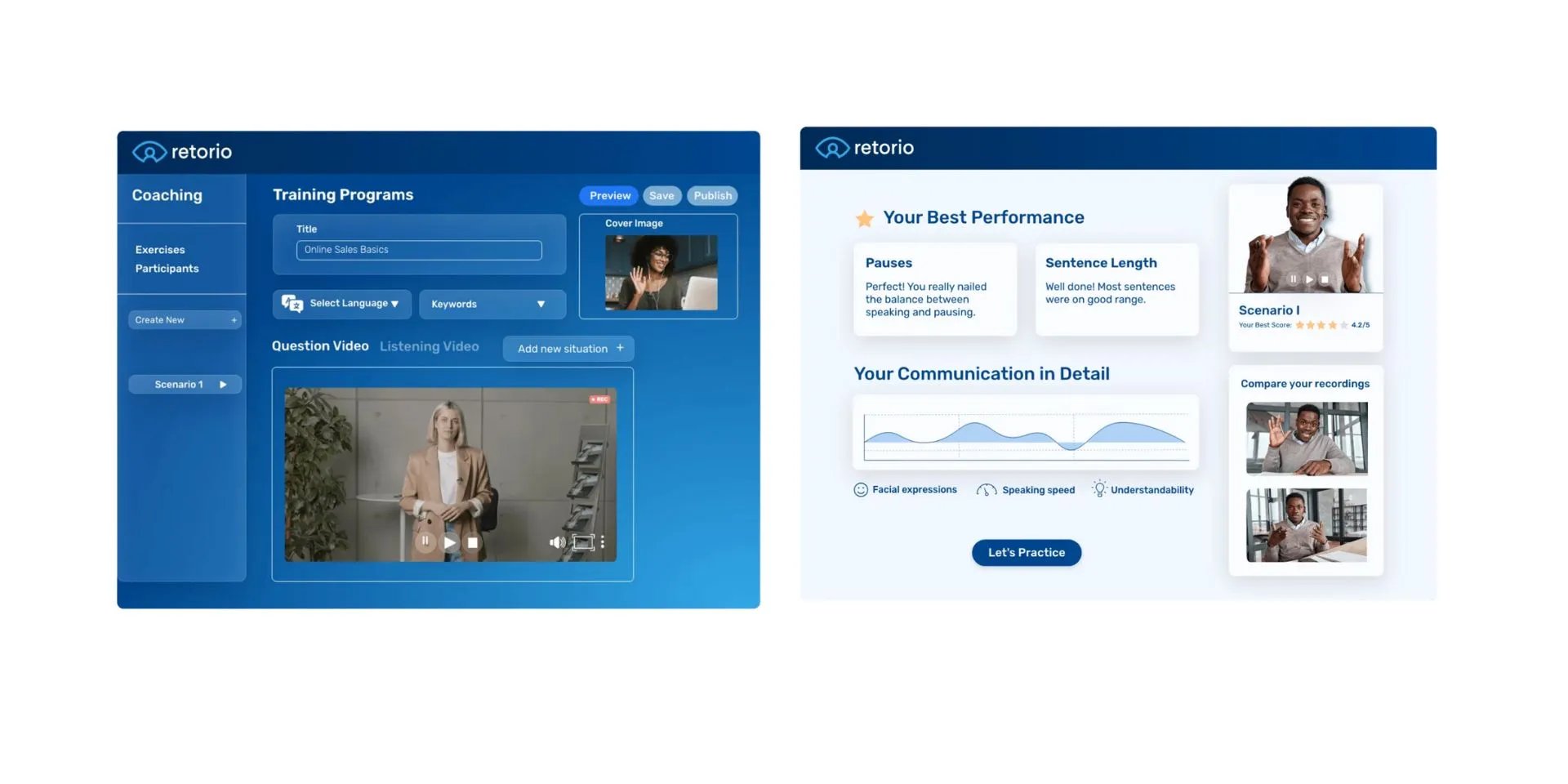Picture this: You are about to begin a performance review process and you have an overwhelmingly large amount of employee data to go through. You are unsure of where to begin, and how you can sort through all the important information and accurately assess employee performance.
Fear not, for that is why performance appraisal software exists.
When it comes to facilitating successful performance management, using the correct tools and software is what will get you ahead of the game to create high-performing teams. How, you may ask? Performance appraisal software streamlines the performance review process which boosts employee engagement, and aids in employee development which is key to retaining your top talent.
It is finally time for you to harness the power of modern technology to elevate employee performance reviews and talent management strategies to boost your bottom line. Read on to find out the six key reasons why you should think about implementing performance appraisal software into your performance management system.
What's in this post?
What is a performance appraisal software?
Before we dive into the reasons why you should a performance appraisal software, it is important to know what it is. A performance appraisal software is a performance management tool that streamlines and simplifies several HR processes across roles. Other software features include automatic reminders for performance reviews, data analysis, and reporting of 360-degree feedback, and opportunities for employee feedback.
All of these factors work together to create a strong performance management strategy that is visible, consistent, and far more effective than the traditional ways.
The main purpose of performance appraisal software is to allow HR specialists and managers to see how well their teams are performing. This software helps executives evaluate the output of their employee performances across different departments, allowing them to make objective, data-driven decisions about their team.
Who benefits from performance appraisal software systems?
-
HR department that creates and implements these systems to make the employee review process easier and more efficient.
-
Managers who facilitate performance reviews and analyze performance results.
-
Managers and HR department when preparing employee onboarding.
-
The organization whose employees show increased productivity, engagement, and motivation to become high-performing teams.
-
Employees who participate in performance reviews and receive feedback on their performance.

Reasons why you should use a performance appraisal software
Let's take a closer look at why you should begin to use performance review software, especially if you want to enhance efficiency across teams, increase employee retention, and boost business performance in no time.
Increased efficiency and time-saving
A performance appraisal software aids in one of the most important aspects of the review cycle: completing the performance management process on time. Regardless of which performance management system you decide to adopt for your review process, your software will help you select a cycle that is best suitable for your employees, and your software handles (nearly) everything else.
From analyzing the collected feedback to sending automatic reminders, HR will experience less burden in hunting down managers and sending multiple emails at a time to ensure that reviews are facilitated on time and that each employee's performance review process is immaculately executed.
Furthermore, performance appraisal software is much easier to keep track of - and is able to quickly generate detailed performance reports on each employee's progress. This can be completed with just a few clicks.
This frees up a lot of extra time for managers and HR to focus on other important tasks. Oftentimes, when manually collecting performance data, it can be easy for documents to get lost. With performance appraisal software, everything is stored in one place and can be accessed at any given time.
When it comes to efficiency in the appraisal process, HR and managers can easily spot the areas of difficulty for employees and take immediate action to address them. Top performers can also be identified more readily and given the recognition and rewards that they deserve.
Employees feel valued when their hard work is recognized, and when they are presented with the opportunity to improve their skills and development areas. Managers can support employee growth with the support of well-designed employee performance reviews.
Increased employee engagement and productivity
When more time is saved on repetitive, and chaotic tasks, managers can dedicate more time to improving employee engagement and boosting productivity in their team.
Performance appraisal software improves employee engagement by performing regular check-ins with each employee to make sure that they are staying on track with achieving their goals and improving performance. Doing so also helps to create a growth-oriented performance culture.
Employees will also be more likely to stay engaged in their roles and driven to accomplish their best when they know that their performance is being monitored and appraised on a frequent basis.
It also allows for managers to provide regular feedback to underperforming employees. Managers can work with employees to develop objectives for the following quarter and support them in improving their performance.
Having streamlined performance reviews also enables managers to facilitate ongoing dialogue between them and their team. This creates a healthy relationship where check-ins feel more like a catch-up conversation and less micromanaging. This in turn helps managers to build high-performing teams.
Moreover, performance appraisal software often incorporates features such as the 360-degree feedback feature and recognition programs that boost employee motivation and morale. In addition to that, most performance appraisal software also includes self-assessments for employees which encourages them to reflect on their personal strengths, voice their achievements, and find areas for professional development.
This data-driven approach promotes fair employee assessments that engage the employee in each review process, resulting in a more productive and engaging workforce.
Set SMART goals and track progress
During the review cycle, one of the most crucial parts is goal management. This includes setting goals that are SMART (Specific, Measurable, Achievable, Relevant, and Time-bound), and making sure your employees stay on top of those goals.
An employee performance management software will do just that.
SMART goals are key to helping employee goals align with business goals. They also help to create goals that are realistic and give employees a sense of direction on where they are headed to achieve top performance.
According to statistics, 59% of companies plan on focusing their goal-setting process more than ever before. With performance appraisal software, managers can help employees set goals, add a deadline, and schedule follow-ups for when it is time to track progress and give updates. Managers will have an easier way to monitor employee performance and ensure that employees are making their way to success.
Managers are also able to give constructive feedback while goals are being worked on. Employees can decide to change their plan of action on how they will achieve their goals if they are lagging behind or earn appreciation for a job well done.
This enhanced transparency around goal setting and progress tracking demonstrates to each employee how their goals align with their company's objectives. When employees get a clear understanding of what is expected of them, not only would employee performance increase but so does productivity.
Performance appraisal software also includes features that allow managers and employees to track progress such as setting up an action plan. This includes any Learning and Development opportunities such as training programs or workshops.
The appraisal software would keep track of any new skills employees take on learning and any training programs and show how much has been achieved for the employees to take accountability for their goals, and for managers to keep track.
Keeping track of employee evaluation records
Performance reviews are important on their own, but they are even more valuable when you can refer back to previously conducted reviews.
A performance appraisal software keeps a consistent and comprehensive record of all employee performance reviews, giving managers and HR 24/7 insight into an employee's growth over time and any trends in their performance. This helps managers prepare for future employee evaluations and learn more about motivating, engaging with, and empowering employee growth.
Managers can look into older employee evaluation records and see what stands out the most for each employee if there are any recurring patterns and behaviors, and what they thrive most in. It helps to identify and track all employee performance trends over time.
Employee evaluation records can also be useful for cases where employees request compensation increases, learning and development opportunities, and even terminations. These records can assist you in developing focused, relevant employee review questions that target areas for reflection, and feedback that employees give which can be valuable to you and the company.
Accessible evaluation records stored on performance appraisal software are also another powerful method for increasing openness in performance appraisals. HR can make more informed decisions and modifications in regards to their performance management approach based on better data access and records.
Some further reasons why it's ideal for a performance appraisal software to keep track of all employee evaluations:
-
If a new manager takes over the team, the new manager can gain well-rounded insights into each employee quickly and efficiently
-
Keeping track of employee performances over a period of time will help managers avoid ambiguous decision-making when it comes to compensation o other benefits given to employees. Managers can make better-informed decisions.
-
The appraisal software is a central repository for all employee performance data that can be used by HR management to create a complete employee performance toolkit.
Identify Learning and Development opportunities
Performance appraisal software highlights the strengths and areas of improvement for each employee. With that being said, it can also pinpoint areas where L&D opportunities can arise.
For example, if you notice an employee struggling to communicate efficiently and professionally with their clients, you may suggest they take part in a training program to develop their customer-facing skills. You can then see if your organization has a training program catered to developing this skill. If not, that can be an opportunity for a new training and development idea that your company and employees will highly benefit from.
A performance management platform would identify areas for employee development, and display them clearly for HR teams and managers to take note of. This supports the long-term success of the company when managers can spot areas of improvement or skill gaps, implement them into training programs, and build high-performing employees.
Doing so also shows employees and potential hires the investment that you are your organization are making toward an employee's professional development. This can make your company more attractive for retaining talent and taking in new hires.
Provide opportunities for continuous feedback
Last, but not least, it's important to know that performance appraisal software provides the best feedback.
Statistics reveal that around 75% of companies worldwide are moving towards a continuous feedback model, where employees receive performance feedback more frequently than before.
This means that feedback no longer comes once a year during an annual performance review, but occurs more frequently to ensure consistent growth and continuous improvement.
With a performance appraisal software, managers get the additional opportunity to offer as well as receive feedback from their employees. They communicate updates on their goals, and managers can offer feedback depending on whether they are doing well, on track, have already accomplished their goal, or if they are behind schedule.
Employees can also give feedback about their managers through engagement and pulse surveys on certain performance review platforms. This feedback is valuable for both the managers and the organization as this shows how employees feel about their managers, and what they can do to become better leaders for the team.
According to 81% of HR leaders, their approach to performance management is evolving. With that being said, you are among the 81%, There are numerous advantages to incorporating performance appraisal software into your assessment process.
Aside from the benefits, being competitive is critical: the performance management software industry is expected to already be expanding at a 13% CAGR through the year 2025.
If you are interested in knowing the most essential performance management features that you look out for, click here to get the full insight.
Traditional performance appraisal software vs. modern performance appraisal software
The main difference between traditional performance appraisal software and modern performance appraisal software is how they analyze and review employee performance and employee growth. Below is a table explaining the difference:
| Aspect | Traditional Performance appraisal software | Modern performance appraisal software |
| Method | Employee ranking from best to poor performance, checklists, forced distribution method, or the paired comparison method can cause tension and conflict in the workplace. They tend to focus more on employee's weaknesses rather than strengths. It is a one-way communication from superior to employee. | Management by objectives method or the 360-degree feedback that encourages a two-way conversation between managers and employees includes continuous feedback and valuable insights from relevant stakeholders. |
| Feedback | Takes on a top-down approach and can often be influenced by personal bias. | Encourages a multi-directional feedback approach that includes an employee self-assessment for personal reflection and a peer assessment for employees to see how they are being perceived by others for personal and professional development. |
| Data and Analysis | Provides HR and managers with limited data analysis on each employee. Therefore, resulting in lower-quality reports on employee performance. | Provides abundant data analytics regarding performance insights and trends for each employee and the team as a whole. m |
| Goal setting and performance tracking | Goals are set only once at the beginning of the year with little to no discussion in between, and are reviewed later with no progress tracking. | SMART goals are set through a performance evaluation template. Also allows employees to continuously set new goals and enables tracking for employees and managers to stay updated on performance progress. |
| Employee engagement | Little to no engagement between managers and employees in terms of career development or feedback, unless its during the appraisal period | Encourages for year-round engagement and employee involvement in L&D opportunities, performance tracking and conversations about goals and ambitions. |
| Employee development | Limited opportunity for a customized development plan for each employee. | Supports personalized development plans and learning paths catered towards each employee to help them grow fast at their own pace. |
| Employee recognition and rewards | Does not take into account any employee achievements for recognition. Is often disconnected from the rewards system. | Recognizes employee achievements, and notifies HR and managers. It also integrates recognition and rewards to boost motivation and productivity. |
| Bias and Fairness | Often subjected to bias due to infrequent reviews and a lack of a structured evaluation template. | Reduces bias with real-time data and a clear and consistent feedback criteria that applies to all employees. |
| Overall efficiency | Often time-consuming and tedious, which can lead to a lack of efficiency and accuracy in evaluation results. | Streamlined processes while increasing the efficiency of each performance review, saving time for HRM and managers for other important tasks. |
How to train managers for a performance appraisal
Conducting a successful performance appraisal requires high-level communication skills and training for handling different types of situations with employees. These situations can range from very positive to very negative. It is therefore important to know how to navigate a performance review effectively that allows them to deliver constructive feedback, and listen to their employee's ideas and concerns.
So, how can you train managers to perform an appraisal effectively? The detailed guide can be read in this post here. However, a shorter version is available below:
Define the purpose of a performance appraisal
Before you begin training your managers on how they should conduct a performance review, make sure they understand what a performance appraisal really is, the purpose of conducting one, and its objectives.
Teach managers what the different functions of a performance appraisal are: evaluating employee performance by identifying the strengths and areas of improvement, setting SMART goals that align with the company's objectives, rewarding top-performing work, openly discussing issues, and providing opportunities to develop skills.
Choose the right performance appraisal method
Prepare for the appraisal in advance
Conduct the actual performance appraisal
When it comes to avoiding biases, train your managers to focus on the employee's behavior and results rather than on their personality. Train them to avoid errors such as the halo effect, recency effect, or severity bias to avoid conflict with their employees.
Implement training programs to develop skills
If you notice that managers are lacking in a certain skill that is hindering them from conducting successful performance appraisals, encourage them to take part in training programs that are catered to their learning needs and learning style to help them boost their managerial performance and become master communicators when it comes to delivering performance reviews.
Retorio's behavioral intelligence platform allows you to create your own AI-powered training in a matter of minutes. You can create a training that actually works and prepare your team for what really matters all with immersive role-plays that train you to handle any given situation with ease. Allow them to practice today what they face in their job tomorrow for a high-performing team.

Begin to maximize the ROI of your learning content and create tailored learning paths for everyone to learn at their own pace, in a psychologically safe space that is accessible 24/7.
Click on the button below to explore our extensive training library and more!
FAQ
The most commonly adopted appraisal methods include the following: the 360-degree feedback, management by objectives (MBO), psychological appraisals, and the behaviorally anchored rating scale (BARS). They all require extensive feedback and are accepted as an effective approach for organizations to use.
A performance management tool is a type of software that HR uses in order to assist companies in tracking and measuring employee performance in a consistent, fair, and measurable manner. It guarantees that cross-functional departments collaborate together effectively to achieve the same organizational goal for long-term success.



